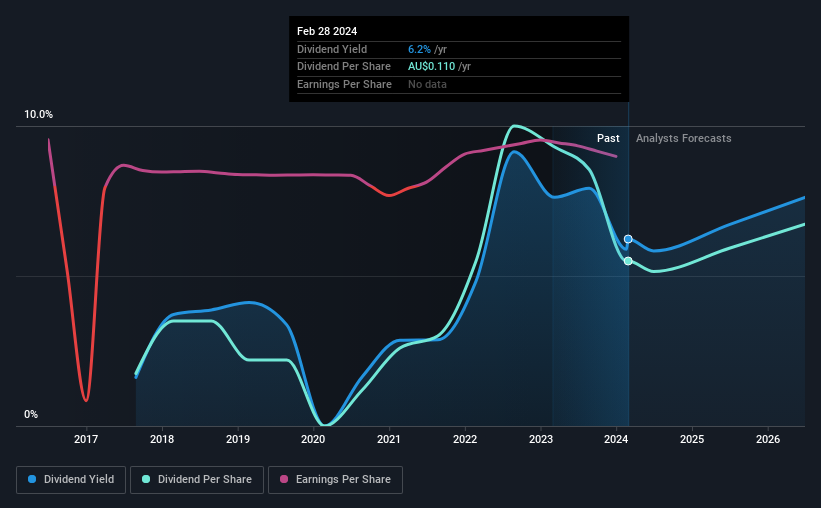Big River Industries (ASX:BRI) Could Be A Buy For Its Upcoming Dividend
It looks like Big River Industries Limited (ASX:BRI) is about to go ex-dividend in the next four days. The ex-dividend date is one business day before a company's record date, which is the date on which the company determines which shareholders are entitled to receive a dividend. The ex-dividend date is of consequence because whenever a stock is bought or sold, the trade takes at least two business day to settle. Therefore, if you purchase Big River Industries' shares on or after the 4th of March, you won't be eligible to receive the dividend, when it is paid on the 27th of March.
The company's upcoming dividend is AU$0.055 a share, following on from the last 12 months, when the company distributed a total of AU$0.11 per share to shareholders. Based on the last year's worth of payments, Big River Industries has a trailing yield of 6.2% on the current stock price of AU$1.765. Dividends are an important source of income to many shareholders, but the health of the business is crucial to maintaining those dividends. That's why we should always check whether the dividend payments appear sustainable, and if the company is growing.
View our latest analysis for Big River Industries
If a company pays out more in dividends than it earned, then the dividend might become unsustainable - hardly an ideal situation. Big River Industries is paying out an acceptable 71% of its profit, a common payout level among most companies. Yet cash flows are even more important than profits for assessing a dividend, so we need to see if the company generated enough cash to pay its distribution. It distributed 37% of its free cash flow as dividends, a comfortable payout level for most companies.
It's positive to see that Big River Industries's dividend is covered by both profits and cash flow, since this is generally a sign that the dividend is sustainable, and a lower payout ratio usually suggests a greater margin of safety before the dividend gets cut.
Click here to see the company's payout ratio, plus analyst estimates of its future dividends.
Have Earnings And Dividends Been Growing?
Businesses with strong growth prospects usually make the best dividend payers, because it's easier to grow dividends when earnings per share are improving. Investors love dividends, so if earnings fall and the dividend is reduced, expect a stock to be sold off heavily at the same time. Fortunately for readers, Big River Industries's earnings per share have been growing at 15% a year for the past five years. Big River Industries has an average payout ratio which suggests a balance between growing earnings and rewarding shareholders. Given the quick rate of earnings per share growth and current level of payout, there may be a chance of further dividend increases in the future.
The main way most investors will assess a company's dividend prospects is by checking the historical rate of dividend growth. Big River Industries has delivered an average of 18% per year annual increase in its dividend, based on the past seven years of dividend payments. It's great to see earnings per share growing rapidly over several years, and dividends per share growing right along with it.
To Sum It Up
Has Big River Industries got what it takes to maintain its dividend payments? We like Big River Industries's growing earnings per share and the fact that - while its payout ratio is around average - it paid out a lower percentage of its cash flow. Big River Industries looks solid on this analysis overall, and we'd definitely consider investigating it more closely.
With that in mind, a critical part of thorough stock research is being aware of any risks that stock currently faces. For example, we've found 3 warning signs for Big River Industries that we recommend you consider before investing in the business.
A common investing mistake is buying the first interesting stock you see. Here you can find a full list of high-yield dividend stocks.
Have feedback on this article? Concerned about the content? Get in touch with us directly. Alternatively, email editorial-team (at) simplywallst.com.
This article by Simply Wall St is general in nature. We provide commentary based on historical data and analyst forecasts only using an unbiased methodology and our articles are not intended to be financial advice. It does not constitute a recommendation to buy or sell any stock, and does not take account of your objectives, or your financial situation. We aim to bring you long-term focused analysis driven by fundamental data. Note that our analysis may not factor in the latest price-sensitive company announcements or qualitative material. Simply Wall St has no position in any stocks mentioned.

